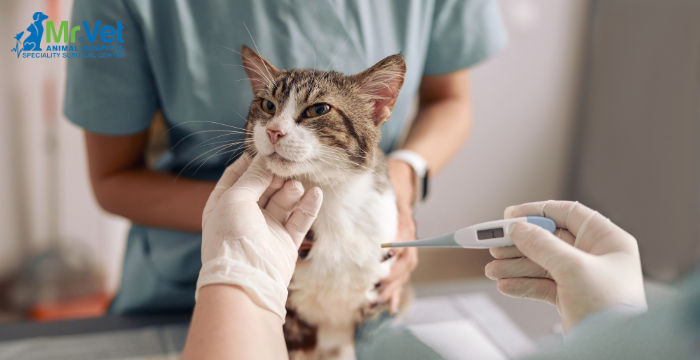
As a pet owner, one of the most important responsibilities is ensuring the health and well-being of your furry friend. While regular vet visits are essential, knowing how to care for your pet at home can make a significant difference in their quality of life. Two crucial skills every pet owner should master are measuring their pet’s temperature and administering medication. This guide will walk you through these processes step by step, ensuring that you can provide the best care for your pet when they need it most.
Understanding Your Pet’s Temperature
Before you begin, it’s essential to understand what constitutes a normal temperature range for your pet. For most dogs and cats, the typical body temperature ranges between 101°F and 102.5°F (38.3°C to 39.2°C). A temperature outside of this range could indicate that your pet is unwell and needs veterinary attention.
Tools You’ll Need
- Digital Pet Thermometer: Specifically designed for pets, it provides quick and accurate readings.
- Lubricant: A water-based lubricant or petroleum jelly to ease the thermometer’s insertion.
- Towels: To help restrain your pet if necessary.
- Treats: To reward your pet afterward and make the experience more positive.
Step-by-Step Guide to Measuring Your Pet’s Temperature
- Get Your Pet Ready: Make sure your pet is at ease and relaxed. Gently restrain them if needed, using a towel to keep them steady.
- Lubricate the Thermometer: Apply a small amount of lubricant to the thermometer tip to make insertion easier and more comfortable for your pet.
- Insert the Thermometer: Gently lift your pet’s tail and insert the thermometer about 1 inch (2.5 cm) into the rectum. Hold the thermometer steady until it beeps, indicating that the reading is complete.
- Read the Temperature: Carefully remove the thermometer and check the reading. If the temperature is outside the normal range, contact your vet for further advice.
- Reward Your Pet: Praise and reward your pet with treats and affection to make the experience less stressful and more positive in the future.
Administering Medication: Making It Easy and Stress-Free
Administering medication to pets can be challenging, but with the right approach, you can make it a smooth process. Whether it’s pills, liquid medication, or topical treatments, here’s how you can ensure your pet gets the right dosage with minimal fuss.
Giving Pills
- Hide in Food: If your pet is food-motivated, hiding the pill in a treat or a small amount of wet food can be an effective way to get them to swallow it without resistance.
- Pill Pocket Treats: Specially designed treats with pockets for pills are available at most pet stores. These can make the process quick and easy.
- Manual Method: If hiding the pill in food doesn’t work, gently open your pet’s mouth, place the pill at the back of the tongue, and then close their mouth and rub their throat to encourage swallowing.
- Use a Pill Dispenser: A pill dispenser or “pill popper” can help you place the pill directly into your pet’s throat, reducing the chances of them spitting it out.
Administering Liquid Medication
- Use a Syringe: Draw the prescribed dose into a syringe without a needle. Hold your pet’s head steady and gently insert the syringe into the side of their mouth, aiming for the cheek pouch.
- Slowly Administer: Squeeze the syringe slowly to allow your pet to swallow the medication gradually. Rushing this process can cause your pet to choke or spit out the medicine.
- Praise and Reward: After administering the medication, always reward your pet with a treat or affection to reinforce positive behavior.
Applying Topical Treatments
- Read the Instructions: Always follow the vet’s instructions carefully when applying topical treatments like flea or tick prevention.
- Part the Fur: For treatments that need to be applied to the skin, part the fur to expose the skin and apply the medication directly.
- Prevent Licking: Make sure your pet cannot lick the area where the medication was applied until it dries, as this could cause them to ingest the medication.
Final Thoughts: Caring for Your Pet’s Health at Home
Knowing how to measure your pet’s temperature and administer medication are essential skills that can help you manage your pet’s health more effectively. These tasks, while simple, require patience, gentleness, and a bit of practice. Remember, your pet can sense your emotions, so staying calm and reassuring them throughout the process is key.
By following these guidelines, you can help ensure that your pet stays healthy and happy, even when they’re under the weather. And when in doubt, never hesitate to reach out to your veterinarian for advice or assistance. After all, your pet’s health and well-being are worth every effort.


